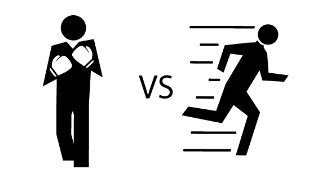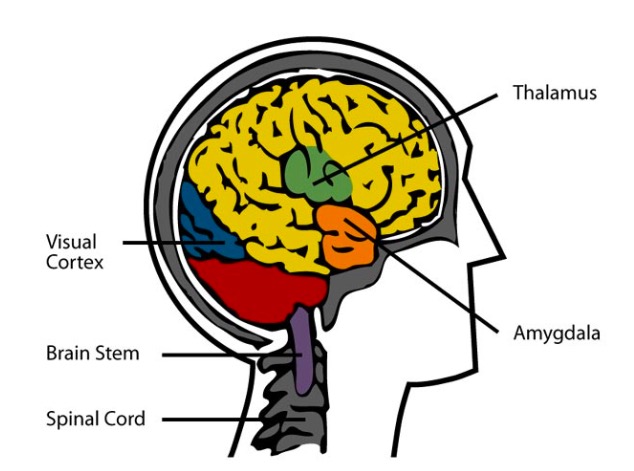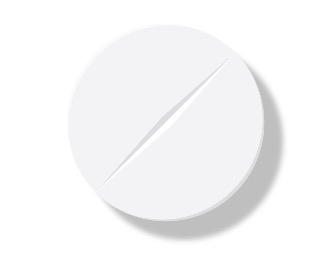Whether real or imagined, when a perceived fear or threat exists to you or your loved ones’ safety, security or welfare, a feeling of anxiety can overtake you. This feeling of anxiety serves to let you know that you and/or your loved ones are at risk of danger and that you need to do something to eliminate this perceived threat. The two most common ways we react to this perceived fear is to either stay and fight or take off in flight.

Fight Vs. Flight Response
When the fight vs. flight response is evoked, a part of the involuntary nervous system called the sympathetic nervous system becomes highly active. The involuntary nervous system deals with every-day bodily functions such as the maintenance of the heartbeat and blood pressure, regular breathing and the digestion of food. The sympathetic nervous system is part of the automatic involuntary nervous system and is responsible for secreting specific hormones such as adrenaline, epinephrine and noradrenaline. These hormones bring about increased blood pressure, and heart rate.
These responses help to deal with the need to fight or flee, but when this occurs during our daily activities, it is important to reduce or slow down these damaging reactions. For most of us today, the fight vs flight response is not a practical way to deal with our fears, worries and resulting anxiety. As a result, anxiety can take over.
Anxiety: A Modern Day Reaction to the Fight vs Flight Response
Anxiety is a feeling of fear and worry, typically about a perceived event that is either real or imagined with an uncertain outcome. It is an outgrowth of the fight vs flight response. When anxiety and resulting depression overtake our lives, it can impact our health, our relationships and even our personal success in school and the workplace.
Two Common Treatments to Anxiety
Today there are many treatments for anxiety. They can be broken into two common categories: Cognitive Behavioral Therapy (CBT) and Medications.

Cognitive Behavioral Therapy
When someone experiences a feeling such as anxiety, a battle between the cognitive and emotional brains begins. In most cases, the cognitive brain works together with the emotional brain. If the feeling becomes too strong, the emotional brain wins out and tells the brain to act according to past experiences.
“The sign of intelligent people is their ability to control emotions by the application of reason.” —Marya Mannes
Many researchers feel that the amygdala is the center of the brain. It controls emotions and can quickly decide on an emotional way of acting in a situation instead of acting in a logical way.
The amygdala seems to work as a storehouse of emotions and feelings.

The researcher Joseph LeDoux, from the Center for Neural Science at New York University, was the first to look at the amygdala and the emotional brain.
The emotional brain responds to an event more quickly than the thinking brain. (Daniel Goleman).
Daniel Goleman, in his book Emotional Intelligence, writes about the inability of the amygdala to correctly handle emotional situations. When the amygdala responds and takes over the thought process, he calls this an “emotional hijacking”. During an “emotional hijacking”, incorrect actions are the direct result of people’s inability to use the cognitive brain along with the emotional brain. The emotional brain simply takes over.
A visual signal goes from the eye (retina) to the thalamus. This is where the message gets translated into the language of the brain. The message then goes to the visual cortex. In the visual cortex the message gets analyzed for meaning and an appropriate response. If the response is emotional instead of rational, things get sidetracked here. In a normal emotional response, a signal goes to the amygdala and activates the emotional center. But a smaller portion of the signal can go from the thalamus straight to the amygdala, resulting in a faster and less precise response. The amygdala can trigger an emotional response before the visual cortex has fully understood what is really happening, creating an “emotional hijacking.” This is the core of some Cognitive Behavioral Therapy training, especially in learning to properly identify and deal with one’s anxiety.
Cognitive behavioral therapy for anxiety is the most widely-used form of therapy for non –psychotic disorders (disorders not involving a loss of contact with reality). Research has shown it to be effective in the treatment of panic disorders, phobias, social anxiety disorders and generalized anxiety disorders. There are not many negative effects from this type or treatment and it should always be considered as the first line of defense against any type of anxiety disorder.

Medications
The second most common treatment for anxiety disorders is medication. It can be used separately or in conjunction with cognitive and behavioral therapies. Some psychoactive medications are extremely effective in the treatment of anxiety disorders, however there are many potential side effects to using these drugs.
According to the Association for Behavioral and Cognitive Therapies, for non-psychotic disorders, findings suggest the CBT can do anything that medications can do as a general rule, and will not cause problematic side effects.
- CBT may also reduce the risk that symptoms will return long after the treatment is over, while medications only work for as long as they are taken.
- CBT can also reduce the risk of disorders coming back through learning, while medications treat symptoms, but not the underlying disorder.
- While people with severe symptoms may be helped by adding the use of medication, CBT is at least as effective, if not more so, for individuals with less severe symptoms.
- Medications can work a bit faster than CBT (a matter of weeks), and there are sometimes benefits from using both therapies together.
- There is some evidence that taking medications can undermine the enduring effects of CBT for some patients.
- Findings on the effectiveness of psychotherapy as an alternative to medication have mostly provided data on CBT. Although other approaches are available, the data is still emerging on their effectiveness.
- Other relationship problems can also benefit from CBT.
- Medications can be addictive.
- Using cognitive and behavioral principals can do everything that medications can do, and often with longer lasting effects.
The website for the Association for Behavioral and Cognitive Therapies states the advent of newer and safer medications has made them available to more people who need treatment for problems like depression and anxiety. “On the other hand, this can represent an opportunity lost, since these drugs do nothing to resolve the underlying propensity to get anxious or depressed.”
Well-meaning physicians want to help their patients, but often the solutions they know are medication, which can cause continuous reliance on medication, when a longer lasting and equally effective alternatives exist. “With the advent of the Internet it is increasingly possible to educate yourself (and your primary care physician) about the possible alternatives.” (emphasis added)
One of those alternatives is Conover Company’s online, cloud-based Anxiety Management Program. Want to see for yourself Contact us today for a free 20-minute webinar and/or trial account.
